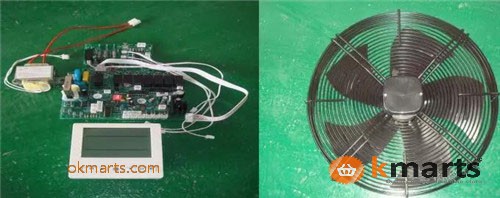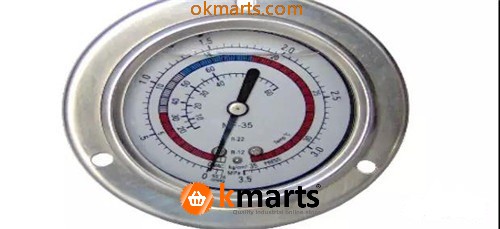Basic knowledge of air energy At present, the most commonly used vapor compression heat pumps, compressors, evaporators, condensers, and throttle valves are the four main components. Other auxiliary components include fans, four-way valves, liquid storage tanks, gas-liquid separators, copper pipes, and Protectors and electronic control parts used to ensure the normal operation of the machine, etc. Direct-heating models also include a water flow regulating valve. Schematic diagram of commercial air source heat pump system

Compared with the air conditioner, in the range of ambient temperature from -10℃ to 45℃, the air conditioner needs heating and cooling to complete the real-time function, and the air source heat pump water heater is a kind of heating. The operating mode adapts to the needs of ambient temperature changes, so the environment to which the heat pump water heater is adapted is even worse.

In GB 21362-2008 "Commercial or Industrial Use and Heat Pump Water Heaters for Similar Uses", heat pumps are classified into common types and low temperature types. The normal working environment temperature is above 0℃. The low-temperature working environment temperature is above -10℃. Air source product structure

Compressor: The compressor is one of the important components of the heat pump unit. Its quality is directly related to the thermal efficiency of the whole machine. The role of the compressor in the heat pump system is to raise the refrigerant working medium steam from low pressure to high pressure, which not only makes the working medium In the (air inlet) low pressure state, it continuously evaporates and absorbs the heat in the air, and continuously heats the water through the heat exchange source at the high pressure end, so the compressor is the power center of the system.Commonly used compressors are divided into piston type, rotor type, scroll type, screw type, etc. In the industry, 1-2 horse home machines generally use the rotor type, while 3-20 horse commercial machines use the scroll type. The screw type is mainly used for larger refrigeration and heating units.

Condenser: The condenser is one of the main heat exchange devices in the heat pump water heater. During the normal operation of the system, the high-temperature and high-pressure refrigerant liquid releases heat in the condenser and is absorbed by water to realize the heat exchange between the refrigerant and water. The water absorbs heat and the temperature rises. The refrigerant in the condenser is removed from the high-temperature and high-pressure liquid It becomes a liquid with low temperature and high pressure, which is why the heat pump can produce hot water.

Evaporator: The functions of the evaporator and the condenser are just opposite. From the perspective of energy conversion: the heat used by the condenser to heat the water is the heat absorbed by the evaporator from the air and the small amount required to drive the compressor, fan motor, etc. Electrical energy. The heat of hot water mainly comes from the air, so the hot water produced by the heat pump is more energy-saving than other heat source equipment.

Both the evaporator and the condenser are relative. To put it simply, regardless of the form and structure, we are used to calling the condenser that radiates heat during normal work the evaporator that absorbs heat. When the air source heat pump works in the defrosting state, the functions of the evaporator and the condenser are reversed.

Throttling device: The throttling device is mainly used to lower the temperature and pressure. The flow of the refrigerant is adjusted to make the liquid flow easier to evaporate at a lower pressure. The evaporation effect directly affects the efficiency of the evaporator to absorb the heat of the air.

At present, the throttling devices used in air source heat pump water heaters mainly include capillary tubes, thermal expansion valves, and electronic expansion valves. Thermal expansion valves and electronic expansion valves are mainly used in commercial heat pump hot water units

Electronic expansion valve is also a more commonly used throttling device. Its advantages are: 1. The flow adjustment is not affected by the change of condensing pressure; 2. Compensate the change of refrigerant liquid supercooling in front of the expansion valve; 3. Quick and accurate execution actions; 4. Effectively control superheat and maximize the capacity of the evaporator;

Four-way valve: The function of the four-way valve is mainly to change the flow of working fluid in the system when the host needs to defrost, so that the condenser during heating becomes an evaporator and absorbs heat from hot water; and the evaporator during heating It will become a condenser and release heat and defrost. Therefore, the heat pump not only cannot heat up during defrosting, but also reduces the temperature of the hot water in the water tank and doubles the heat loss. Generally, the heat wasted due to the defrosting of the host accounts for about 20% of the total heating capacity. This is also one of the important reasons for the low energy efficiency of air source heat pumps in winter. The four-way valve is not an essential part of the heat pump water heater product. If other defrosting methods are used, the four-way valve can be eliminated.

Fan and electric control system Fan: It is used to increase the heat exchange effect between the heat in the air and the evaporator, while ensuring that the evaporator is not easy to frost. Electronic control: used to control the normal operation of the entire machine. Pressure switch and pressure gauge


